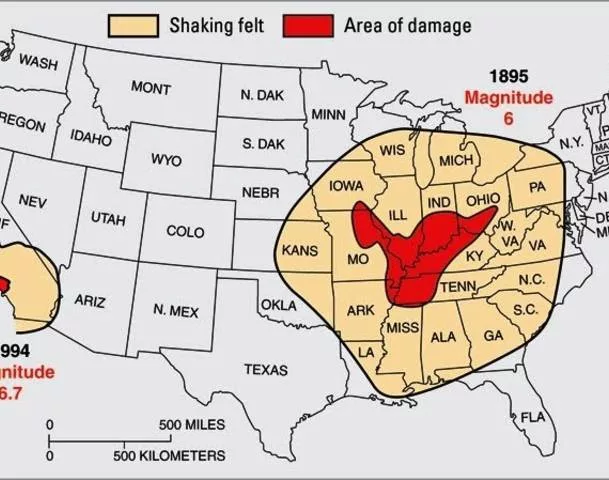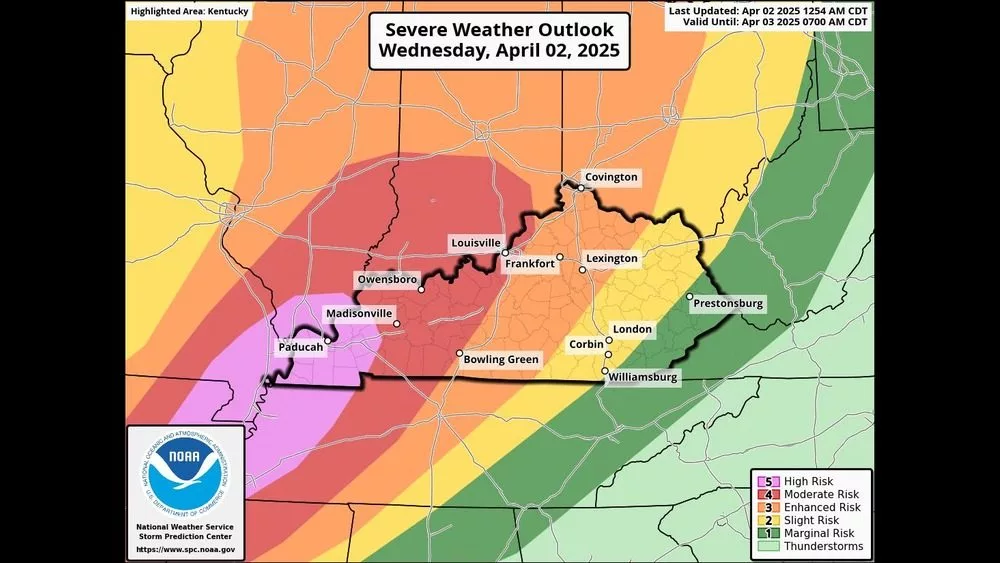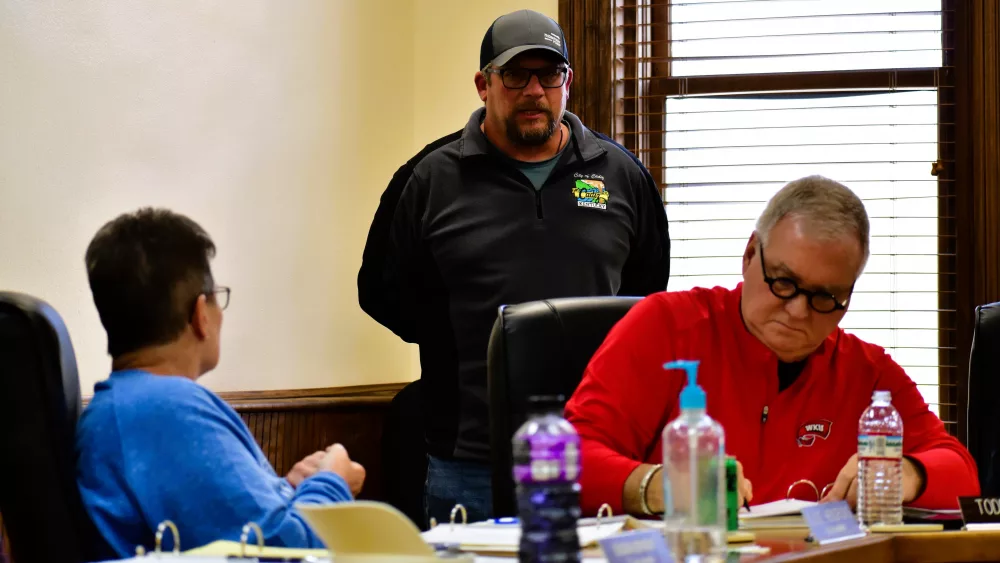Not far from Memphis and St. Louis, 600 million years ago, the continent tried to rip in half. It failed. This was not our world.
This world was still convalescing from the near-death experience of Snowball Earth—having hurtled in and out of planet-wide glaciations, and the first strange whispers of simple animal life had just begun to be etched in ocean rocks. An oce an not unlike the Atlantic (only a half-billion years earlier) began to grow between the rifting continents.
an not unlike the Atlantic (only a half-billion years earlier) began to grow between the rifting continents.
But in “Missouri,” a similar ocean rift stalled. Here the continent tried to divorce but it didn’t take. For hundreds of millions of years this failed rift (called the Reelfoot Rift) has languished as a jagged scar buried deep in the earth. As the ages have passed, it’s been covered far above at the surface by trilobites in shallow seas, later by coal swamps, and later still, by coastal dinosaurs. But it’s never fully healed.
Only a few thousand years ago, this rift reawakened. A little over 200 years ago, several faults along this unthinkably ancient gash ruptured, triggering some of the largest earthquakes in American history. Luckily, almost no one lived near Southeast Missouri at the time. But today millions of people now live there. The New Madrid Fault zone is six times larger than the San Andreas Fault zone in California and it covers portions of Illinois, Indiana, Ohio, Misso uri, Arkansas, Kentucky, Tennessee and Mississippi. Back in 1811 and 1812, a series of absolutely devastating earthquakes along the New Madrid fault zone opened very deep fissures in the ground, caused the Mississippi River to run backwards in some places, and were reportedly felt as far away as Washington D.C. and Boston.
uri, Arkansas, Kentucky, Tennessee and Mississippi. Back in 1811 and 1812, a series of absolutely devastating earthquakes along the New Madrid fault zone opened very deep fissures in the ground, caused the Mississippi River to run backwards in some places, and were reportedly felt as far away as Washington D.C. and Boston.
They were the strongest earthquakes ever recorded east of the Rocky Mountains, and scientists tell us that it is only a matter of time before we experience similar quakes. In fact, the U.S. Geological Survey has admitted that the New Madrid fault zone has the “potential for larger and more powerful quakes than previously thought“, and the number of  significant earthquakes in the middle part of the country has more than quintupled in recent years. Due to the harder, colder, drier and less fractured nature of the rocks in the earth’s crust in the central United States, earthquakes in this region shake and damage an area approximately 20 times larger than earthquakes in California and most other active seismic areas. Over the last couple of weeks, several earthquakes have been recorded in the 2.5 to 3.5 magnitude range and seems to have an increase in the strength of the quakes that normally have been occurring.
significant earthquakes in the middle part of the country has more than quintupled in recent years. Due to the harder, colder, drier and less fractured nature of the rocks in the earth’s crust in the central United States, earthquakes in this region shake and damage an area approximately 20 times larger than earthquakes in California and most other active seismic areas. Over the last couple of weeks, several earthquakes have been recorded in the 2.5 to 3.5 magnitude range and seems to have an increase in the strength of the quakes that normally have been occurring.
Someday, perhaps without any warning, an absolutely massive earthquake will strike the New Madrid fault. There is no way of knowing when that will happen. When it does, thousands of Americans will die, tens of thousands of structures will be completely destroyed, and millions of people will find themselves homeless. This would be a nightmare that none of us could wake up from. The New Madrid Fault appears to be about 30 years overdue for a magnitude 6.3 quake because the last quake of this size occurred 100 hundred years ago at Charleston, Missouri, on Oct. 31, 1895 (it was a magnitude 6.7). A magnitude 6.3 quake near Lepanto, Arkansas, on Jan. 5, 1843, was the next prior earthquake of this magnitude.
So, since we don’t know when the big one may come, the best thing to do is to prepare for it. Work on getting an emergency plan in place for you and your family. You need this whether the threat is from earthquakes, tornadoes, floods, or anything else that may threaten our way of life. In the next post, I will discuss the New Madrid Fault more and show you some things you can do to prepare. Feel free to leave comments and be sure to hit the “Like” button at the bottom of this post.






